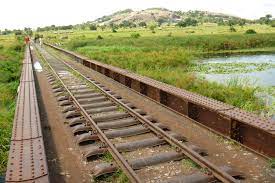The United States and the European Union have collaborated with the African Development Bank (AFDB) and the Africa Finance Corporation to inaugurate the West’s most recent effort to challenge China’s Belt and Road Initiative, an ambitious infrastructure development program seeking to link China with markets and economies across the globe.
The involved parties have formalized their agreement by signing a memorandum of understanding that outlines their intentions to develop the “Lobito Corridor” and the Zambia-Lobito railway.
Together, these initiatives will create a vital cross-continental connection through regions hosting significant mineral deposits.
The agreement was reached during the Global Gateway Forum in Brussels, a selective gathering that brings together EU governments, corporations, financial institutions, and international organizations to promote global infrastructure development.
The State Department said in a press statement that the project was “the most significant transport infrastructure that the US has helped develop on the African continent in a generation, and will enhance regional trade and growth as well as advance the shared vision of connected, open-access rail from the Atlantic Ocean to the Indian Ocean”.
These initiatives will be executed within the framework of the Partnership for Global Infrastructure and Investment, established as the G7’s response to the Belt and Road Initiative, GCR reported.
It was inaugurated last June during the Schloss Elmau summit in Germany, to invest over $600 billion by 2027 to address infrastructure deficits worldwide.
Historically, the United States and its allies have made previous attempts to introduce programs aimed at countering China’s substantial infrastructure investments in the developing world.
Helaina Matza, the special coordinator of the partnership, explained in a digital press briefing that the primary concept is to provide funding for the renovation of the railway line from the Angolan port of Lobito to the border of the Democratic Republic of Congo (DRC).
Also, a new railway from northwestern Zambia would connect to this existing line.
She stressed that the goal is to showcase that it is possible to invest in substantial infrastructure projects collectively.
“It’s 800km of new greenfield rail cutting between Angola and Zambia. It involves a large contribution from AFDB that they’re sorting out the parameters. And collectively, all funding partners put together around $10m to start the feasibility study before the end of this year.”
The project also involves building 260km of roads and about 550km of track in Zambia, spanning from the Jimbe border to Chingola in the country’s copper region.
As well as the railway, the corridor will involve 4G and later 5G telecoms systems and a billion-dollar investment in solar farms and microgrids.
In July, Zambia, the Democratic Republic of Congo (DRC), and Angola inked their memorandum of understanding to advance the corridor project. A consortium led by the multinational commodities trader Trafigura had already been selected to oversee a $570 million rehabilitation initiative.

